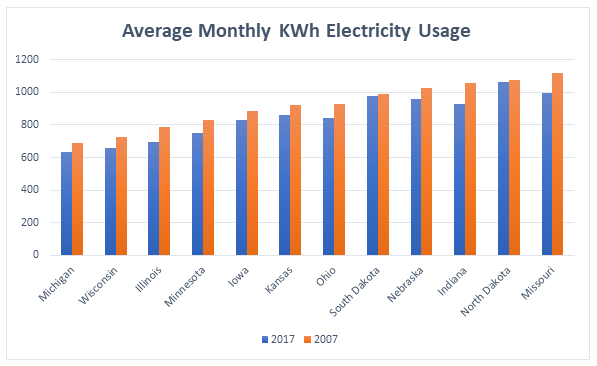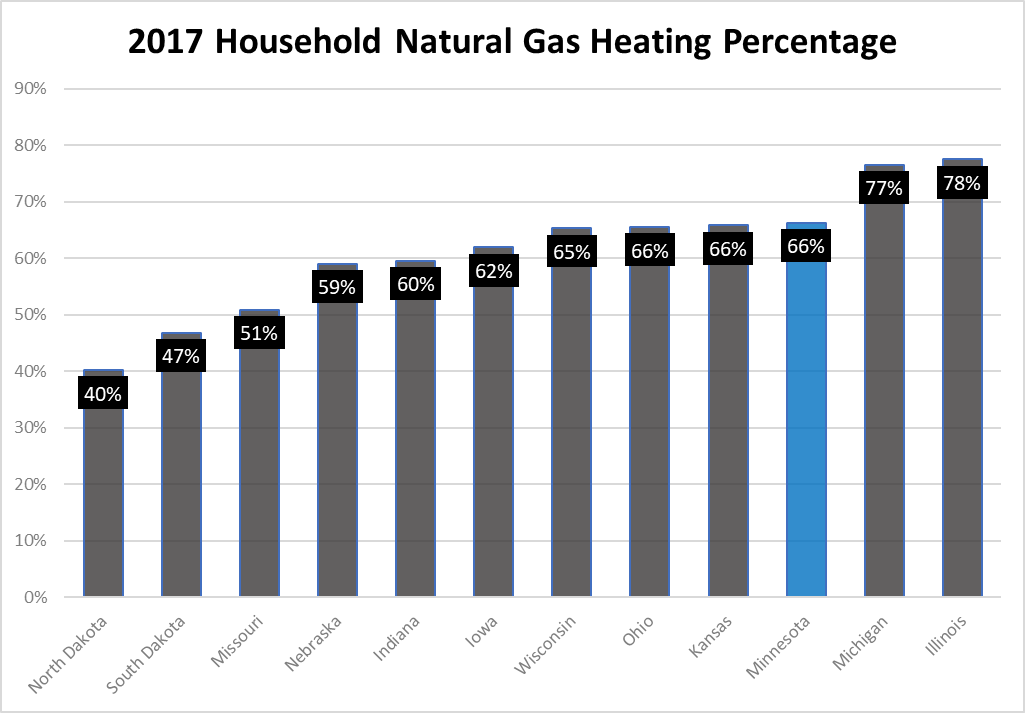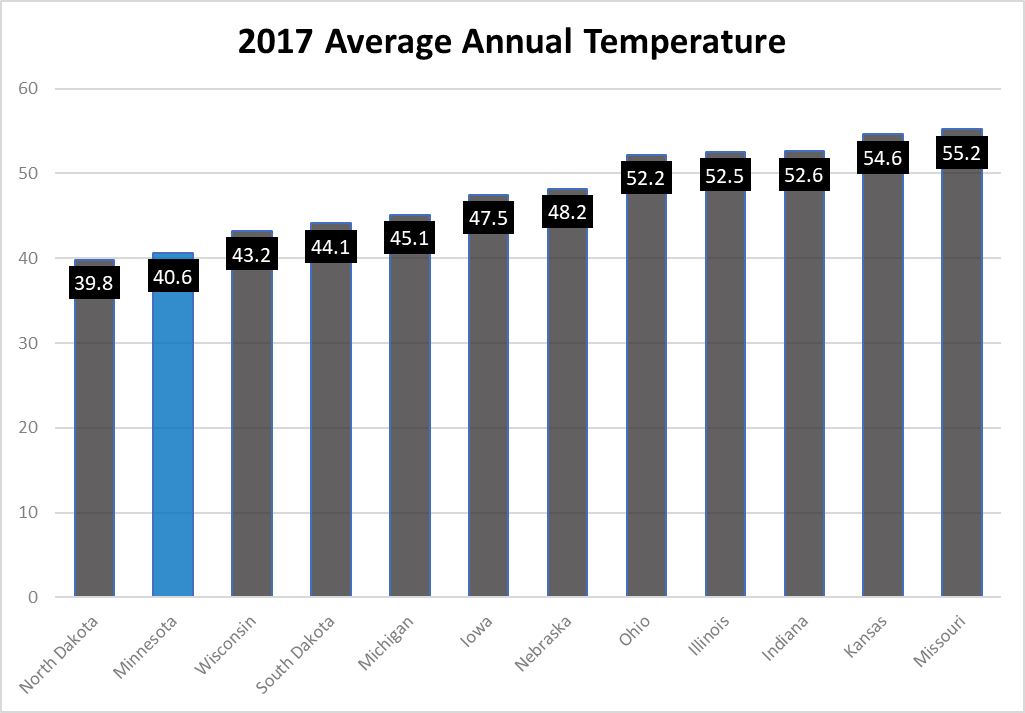Fresh Energy Is Still Intentionally Misleading Minnesotans on Energy Issues: Part Two – Electricity vs. Natural Gas Usage
Fresh Energy, a renewable energy advocacy organization, continues to mislead Minnesotan’s on energy issues – and it appears they don’t appreciate our work explaining how wind and solar are driving up the cost of electricity in our state.
In their latest critique of American Experiment, Fresh Energy made multiple attempts to inaccurately portray our organization as misunderstanding how electric rates work, while arguing that wind and solar are the cheapest sources of electricity that are a boon to job creation in our state.
Each of these claims is demonstrably false.
The article below is the second in a series of articles that will thoroughly explain how Fresh Energy continues to mislead Minnesotan’s on the cost of electricity in our state.
Electricity Usage in Minnesota and How It Affects Electric Bills
For electricity consumers, reducing monthly electricity usage is by far one of the most constructive things to do in order to help keep their electricity bills from increasing.
However, it has become increasingly more difficult for Minnesota consumers to lower their electric bill in recent years because the price per kilowatt-hour of electricity has gone up by 18 percent in inflation-adjusted dollars from 2007 to 2017, rising 26 percent faster than the national average.
Fresh Energy consistently attempts to hide the fact that electricity prices are increasing in Minnesota by stressing that electric bills in our state are still “considerably lower than our neighbors in the Midwest (Illinois, Indiana, Iowa, Kansas, Michigan, Missouri, Nebraska, North Dakota, Ohio, South Dakota, and Wisconsin).”
And Fresh Energy is correct in that regard – Minnesota has the fourth-lowest electric bills in the Midwest according to data from the Energy Information Administration (EIA) seen in the graph below.

But there’s a very good reason for this: Minnesota households use less electricity than neighboring states and always have, as you can see from the graph below.
It’s rather intuitive: if you use less electricity, you pay less money. After all, Bills = Price of electricity (rate) X electricity consumption.

Notice how the five states with the lowest monthly electric bills are the same five states with the lowest monthly electricity usage. (Michigan, Wisconsin, Illinois, Minnesota, and Iowa).
This is exactly why comparing electric bills, rather than electricity rates, is misleading.
Comparing Minnesota electric bills with other states is similar to comparing monthly fuel expenses for your vehicle with your neighbor, even though he drives an hour to work and you work from home.
Obviously, your neighbor would have a higher monthly expense because he needs to use more fuel. This is exactly the same with comparing electric bills: other states have higher monthly bills than Minnesota because they require more electricity.
The Next Generation Energy Act (NGEA), passed in Minnesota in 2007, is often touted by organizations like Fresh Energy as being responsible for reducing electricity consumption in the state. However, as you can see in the graph above, Minnesota has always used less electricity than most states in the Midwest.
Furthermore, the graph above also shows that every other state in the Midwest decreased electricity usage, as well, including those without energy efficiency legislation, such as Indiana and Missouri. Some of these states even outpaced Minnesota in the amount reduced. This suggests that decreasing electricity usage is a nation-wide phenomenon, and not 100 percent attributable to the NGEA. We will discuss this more in the third article of this series.
So, the next question becomes: why has Minnesota always used less electricity than neighboring states? There are a few reasons.
First, 66 percent of homes in Minnesota use natural gas heating. As a result, Minnesota households utilize less electricity during winter months than surrounding states like North and South Dakota, where temperatures are similar but only 40 percent and 47 percent of homes use natural gas heating, respectively.

Fresh Energy stated in their recent critique of American Experiment that “71 percent of homes in the Midwest region use natural gas as their main heating source, which is a higher rate than in Minnesota,” and, as a result, they argued that “we spend less on electricity not because of natural gas heating, but because of good public policy.”
However, the graph above shows Minnesota was tied for the third-highest percentage of natural gas heating among states in the Midwest, and our reliance on natural gas for home heating reduces our use of electric heating, which would otherwise increase electricity consumption, and raise electric bills.
It’s also interesting to note that Illinois and Michigan, two states with the highest rates of natural gas heating, also have the lowest and third lowest monthly electric bills, respectively, as well as constitute 32 percent of Midwestern households. This only reinforces our position that higher rates of natural gas heating reduce electricity consumption, and result in lower electric bills.
Additionally, not only do Minnesotans use less electricity in winter, but because Minnesota is one of the coldest states in the country, as shown in the graph below, we also have fewer days where air conditioning is required, reducing our electricity consumption substantially, and bills, compared to other states.

Fresh Energy continues to overlook or neglect these crucial facts about electricity consumption, causing them to draw incorrect conclusions about the cost of electricity in Minnesota.
In the next piece, we will explain why energy efficiency in Minnesota isn’t spectacular, and how as crazy as it may seem, it isn’t saving you any money.